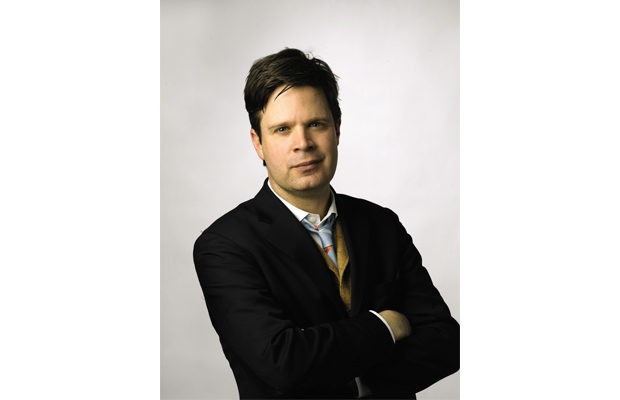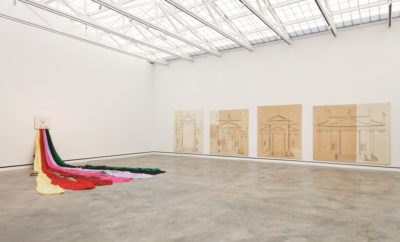
Design
Design Trail Blazer: Sotheby’s James Zemaitis talks about taste, trends, and the trophies buyers sometimes land

James Zemaitis, Sotheby ’s Director of Design, has cultivated a new generation of collectors, raised that specialty to yet higher levels, and built his own formidable holdings, all in what seems like a nanosecond. Just over a decade ago, he began as cataloguer at the then Christie’s East and afterward moved on to Phillips, De Pury and Luxembourg, before joining Sotheby’s in 2003. There Zemaitis has racked up a slew of world price records, including an Alexandre Noll chair climbing to $680,000 and the Farnsworth House by Ludwig Mies van der Rohe, which sold to the National Trust for $7.5 million. Plus, he has achieved auction records for design by Paul Frankl, Gilbert Rohde, and Serge Mouille. In between, this auction house superstar coauthored The Coffee Table Coffee Table Book (Black Dog/Phaidon, 2003), the first-ever survey of that form. Today, he sits on the boards of the Wolfsonian-Florida International University in Miami Beach, and Manitoga/ The Russel Wright Design Center in Garrison, New York.
MODERN Magazine sat down with Zemaitis to learn the new trends, what’s affecting the market, who the latest players are and what trophies they are snagging, along with how his own personal collection is shaping up.
How do you see collecting changing?
Today, there’s an immensely larger market for postwar design, with an incredible amount of
material at Christie’s, Sotheby’s, Rago in Lambertville, New Jersey, Wright in Chicago, and Los Angeles Modern Auctions. Interest in designers who seemed such a novelty ten years ago—Poul Kjærholm or Ray and Charles Eames, for instance—is waning. Instead, we’re seeing a far greater appreciation for the New Hope school, which translates into an entire new cache of collectors, along with steeper prices, for the craggy cast-iron sideboards and tables of Paul Evans and the classic tables and chairs of Phillip Lloyd Powell.
At auction, who’s buying at the top and what are they zeroing in on?
These days, the market is totally global, with Chinese, Indians, Brazilians, Americans, and especially the French seeking masterworks. They’re after tiptop Tiffany lamps as well as fine furnishings by Ruhlmann, Rateau, Giacometti, Prouvé, and Eileen Gray—even though practically no one can get their hands on her work. Also high on their shopping lists are the whimsical creations of the late François-Xavier Lalanne and his wife Claude. Prices for that material can hit $500,000 and higher.
Who’s making up the latest batch of players?
What’s new are the Taiwanese dipping into Tiffany and Ruhlmann and at the same time seeking out Phillip Lloyd Powell interiors. Who would have thought such rarities would end up in Taiwan?
With the Taiwanese and others plundering design icons, and so hiking up prices, what’s left over for the relatively new but sophisticated player?
Danish design is still relatively affordable compared to blue-chip French furniture. They should head for Poul Kjærholm, Finn Juhl, and Hans Wegner. There’s a vast market for Wegner and you can pick up a single chair for only $500.
And the younger designers to watch?
The hottest designer on the market is Joris Laarman, represented in New York by the Friedman Benda gallery in Chelsea. He’s Dutch and in his early thirties. His limited edition Bone chair in aluminum is especially coveted.
How is the role of interior designers and architects changing?
The big ones like Lee Mindel, Peter Marino, and Thomas O’Brien in New York and Michael Smith and Atelier AM in Los Angeles are taking on multiple roles. They’re architect, designer, and furniture advisor all rolled into one. That’s a brand new dynamic. These days, those designers are hoovering up specific items like Lalanne sheep and Ingrid Donat metal furniture. Mattia Bonetti is another favorite.
To what degree are museums affecting collectors?
Hugely, with museum collections making for more informed clients at multiple levels. Here in America the biggest new player in the field is George R. Kravis II, portions of whose collection are now on show at the Philbrook Museum in Tulsa. He’s amassed enormous holdings of industrial design. Then a number of museums like the Museum of Fine Arts, Boston have strengthened their permanent collections. The Los Angeles County Museum of Art exhibition California Design, 1930–1965: Living in a Modern Age placed key designers like Sam Maloof on a wider stage, and we’ll see that collectors will respond to that.
What were the first design objects you acquired?
Russel Wright dinnerware in every color, but my favorite remains Bean Brown with a reddish tinge to the rich chocolate brown. To this day, I dine on it. It’s dishwasher safe. Also early on I was drawn to the still relatively obscure designer Tony Paul, who’s a level below Paul McCobb. I picked up his mid-century bar cart in black-painted wrought iron with a series of round holders for bottles, glasses, and an ice bucket. There’s a cool geometry to his designs yet they remain undervalued. I think I paid $800 for it, and today it is tagged at $1,000. At the same time, I’ve delved into 1920s and 1930s cocktail shakers.
How is your own taste maturing?
My preferences have usually mirrored what I was selling. I’ve been obsessed with mid-century designers like Donald Deskey, and I’ve got a pair of Hans Wegner lounge chairs with caned seats and Florence Knoll furniture as well. On my wish list is a dynamite Nakashima coffee table—but I really can’t afford one—and I’d kill to have a Prouvé desk chair. Lately, I’m drawn to the nineteenth-century glass lamps of Philip Handel, with reverse-painted flora and fauna landscapes on their domed glass shades. They’re like having a nineteenth-century Thomas Cole landscape painting, but with an art nouveau sensibility, in your living room. While we sell only one a year here at Sotheby’s, James D. Julia auction house in Fairfield, Maine, has cornered the Handel market and prices can hover in the range of $3,000 and up. Now that I’m forty-four and growing older, my taste is bordering on the archaic with a focus on American folk art, rare children’s books, vintage travel books, and even stamps.












